Colwyn recently posted her observations on the first crops of mushrooms “popping up” around the village. Over the last few weeks even more have been springing up around the forest walking tracks and many of them are delightfully photogenic although they can be frustratingly difficult to identify. Here is a collection from the last month that Andi Cairns and I have seen out on the tracks. The identifications are made with a fair degree of confidence (and a large measure of hubris) but we would welcome any comments on our identification efforts.
Mycena haematopus – Bleeding Fairy Helmet
This gorgeous mushroom gets its somewhat macabre common name from the fact that it will ooze a red/purple juice if squeezed or cut (especially at the base of the stem). If the name puts you off you can always opt for its alternative common name: Burgundydrop Bonnet. It is widespread and common in Europe, North America and also recorded in SE Asia and Australia.

Filoboletus manipularis – no common name
Depending on which reference you use this delightful clumping mushroom, frequently found on logs and trees, can be named Filoboletus, Favolaschia or Mycena. It differs from other clumping fungi on trees in that it has a reticulate pattern of pores under that cap instead of linear gills.
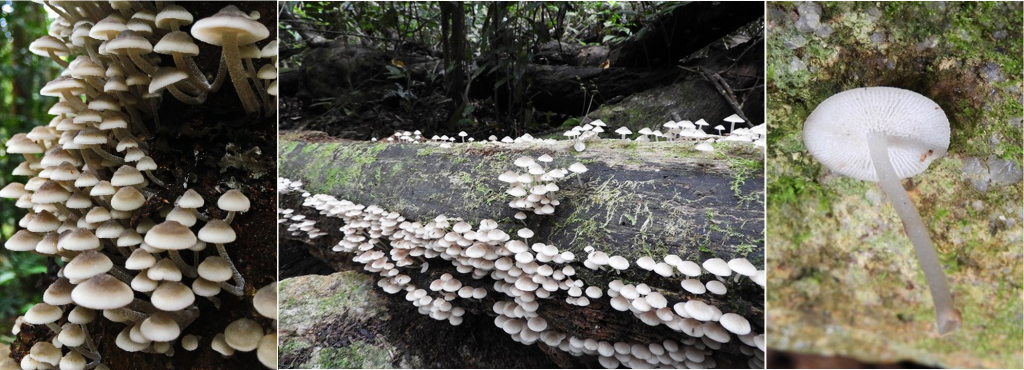
Wikipedia claims that it is bioluminescent but the specimen shown on the tree trunk did not show this trait (the mushrooms were rotting by the time I (JO) went back to check.
Dacryopinax spathularia – Fan-shaped Jelly Fungus
This is a beautiful and common fungus which can be found as small yellow/orange blades poking out of cracks in dead wood or as larger convoluted fans. It will even grow on polyester rugs, so you might just find it in your house if we ever get a proper wet season here in Paluma!
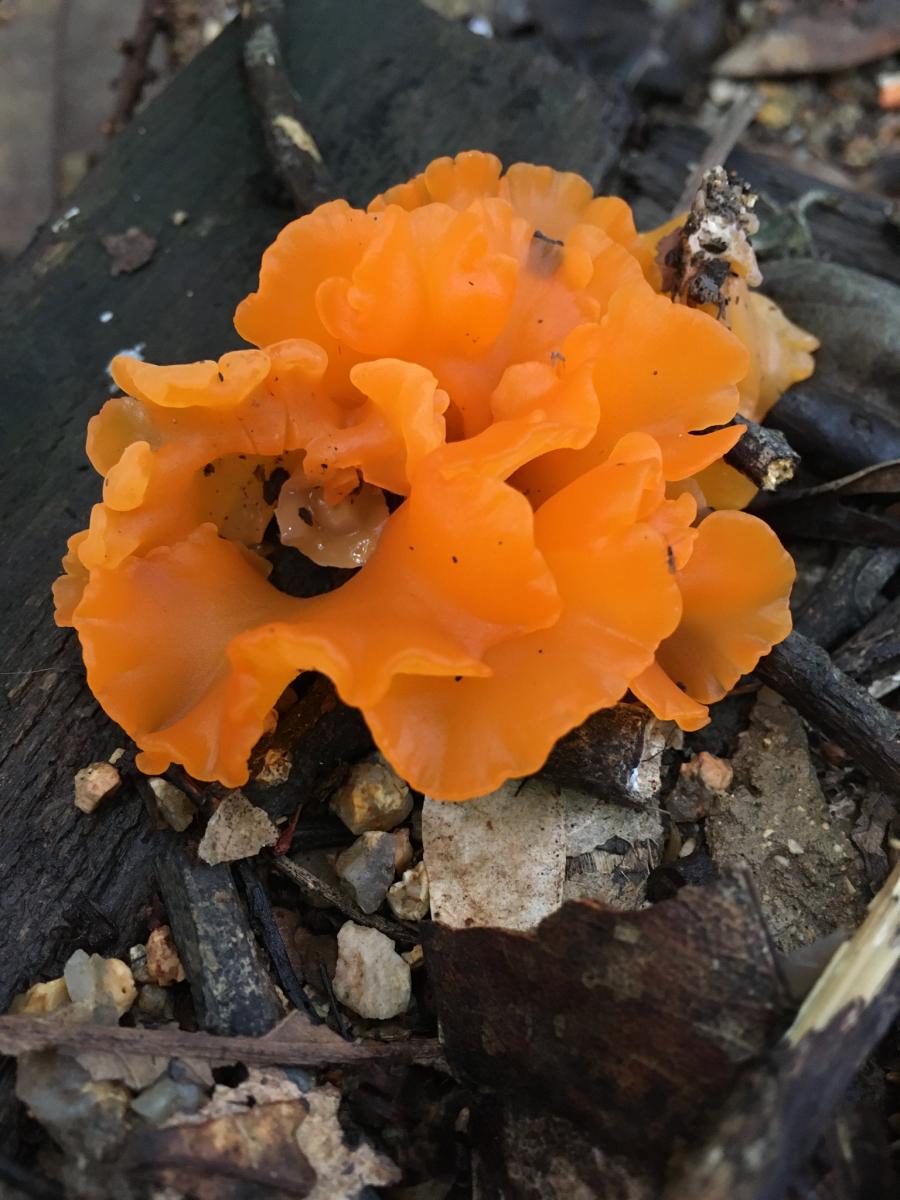
Wikipedia states that this species is edible and is a component of the Asian vegetarian dish called Buddha’s Delight. But PLEASE DO NOT EAT this unless you independently confirm its identity
Crust Fungi, or Corticoid Fungi
These are not often mentioned in books or online and are a diverse group of fungi with superficially similar form (encrusting) but which can belong to any of 18 different taxonomic orders. On consultation with an expert colleague of one of us (AC), Dr Sapphire McMullan-Fisher, “ This is a skin, patch or Corticoid fungus, which are super-tricky [to identify] and we don’t have many experts in Australasia. Microscopic characters are likely needed [to confirm identification].” To the untrained eye this one could easily be taken for a lichen, so confirming that it is actually a type of mushroom is some progress.
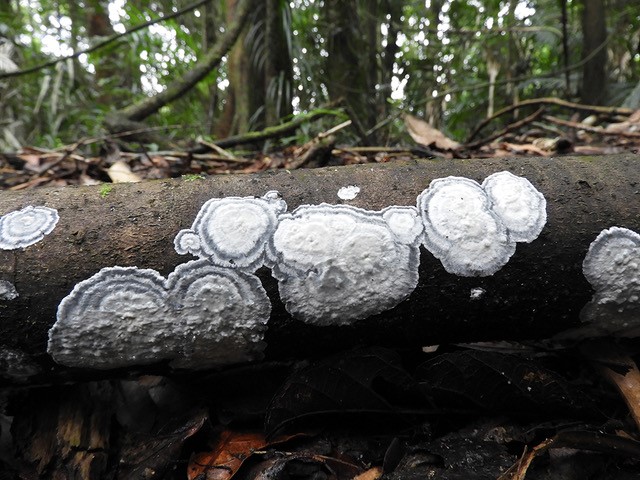
Galerina patagonica – no common name
A beautiful clumping mushroom that grows on rotting logs, it belongs to a group with highly toxic species that unfortunately bear a strong resemblance to some hallucinogenic Psilocybin mushrooms. So if you are looking for an alternate view of reality – beware.
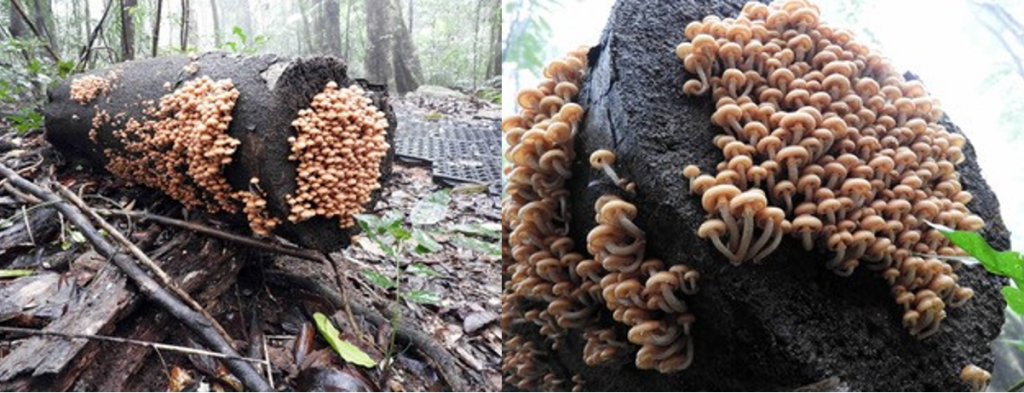
This species has not been formally recorded in north Queensland before, although there are some photos on Flickr that were taken in Cairns that are identified as C. patagonica.
Cyptotrama asprata (Golden Scruffy Collybia)
This distinctive and beautiful orange mushroom can be found along the H-track as well as other local tracks. It grows on dead wood and is found worldwide in the tropics.
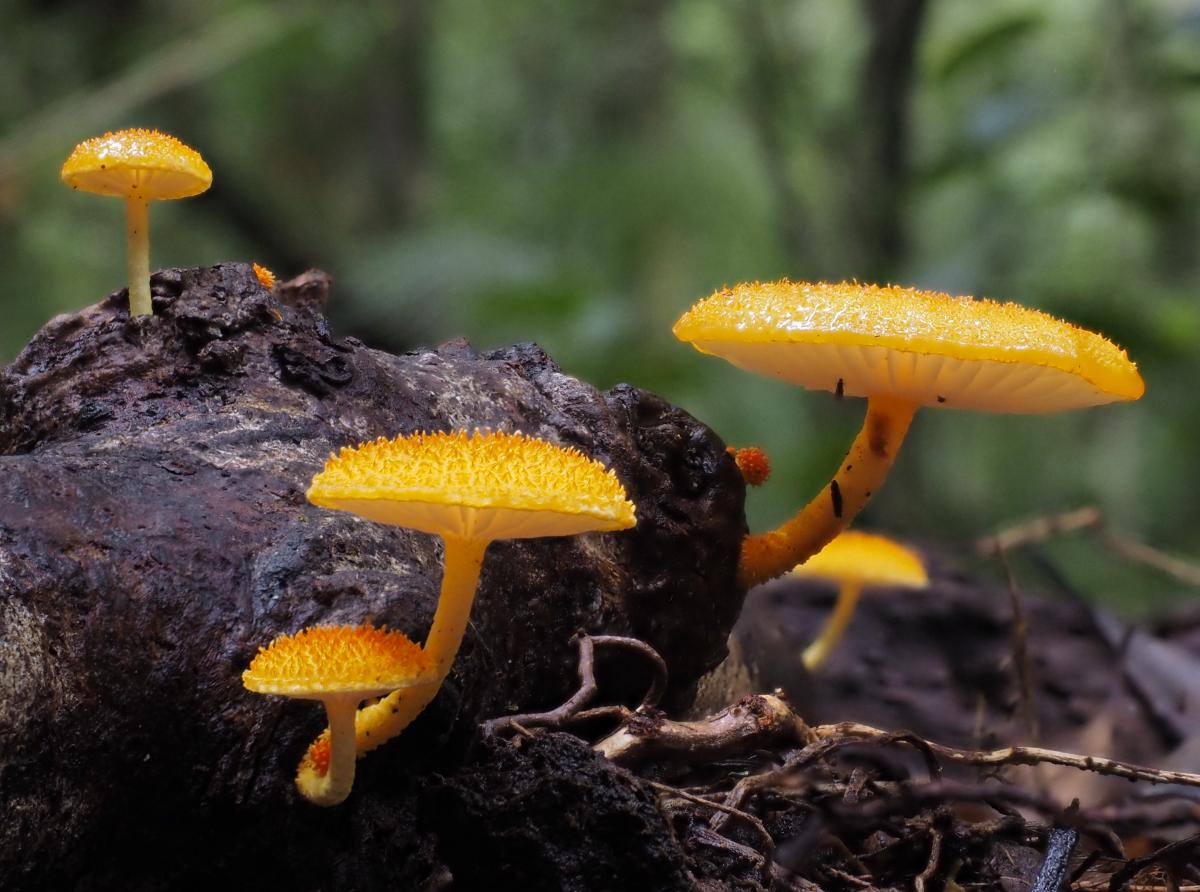
Leucocoprinus fragilissimus (Fragile Dapperling)
This dainty (and fragile) mushroom starts off with a rounded convex cup that becomes flat then slightly convex with age. It is quite common on local forest tracks. Even a gentle touch is likely to damage the cap. It is found on all continents.
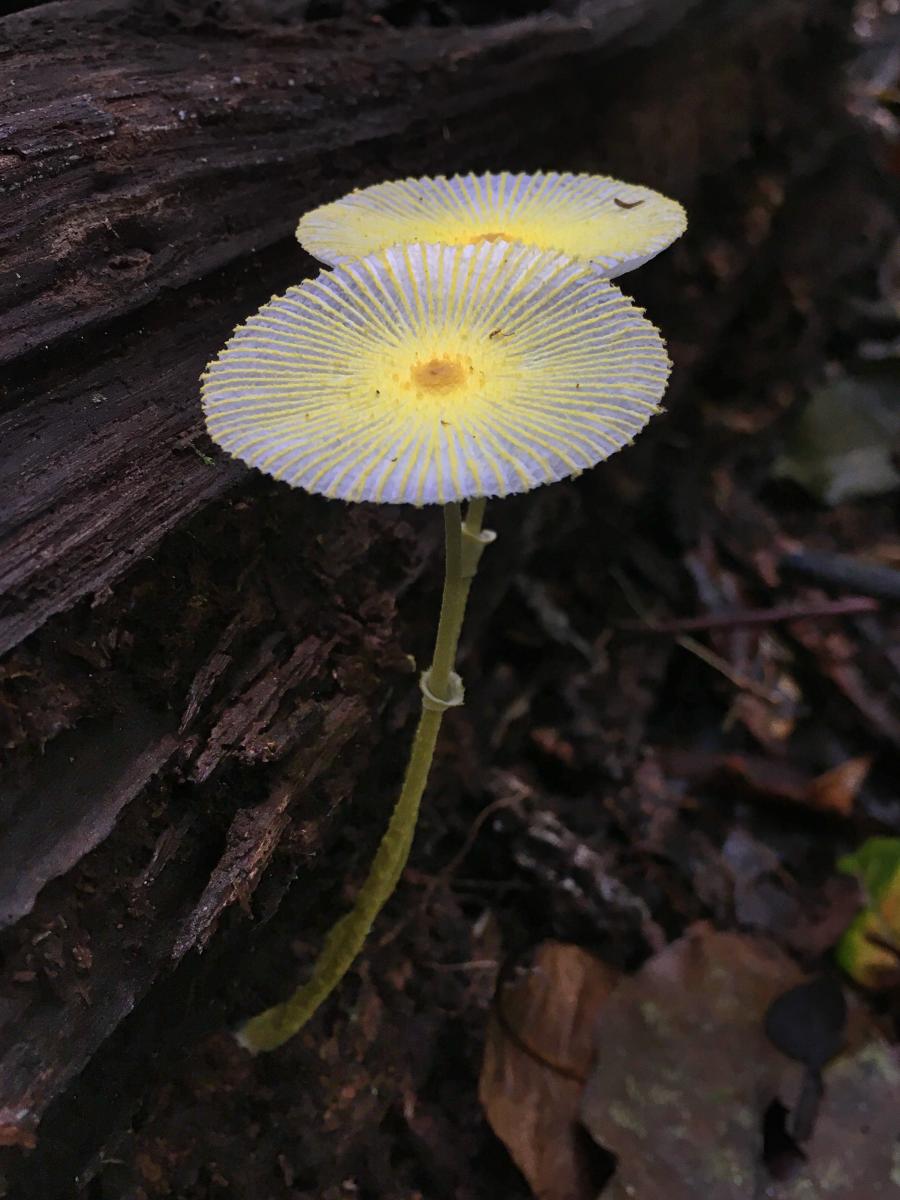
Laetiporus sp – Shelf fungi
I was impressed by the size and colouration of this shelf fungi on the Andreé Griffin Track. I am not certain of the species but it is a member of the Polyporace which includes a variety of shelf and bracket fungi.
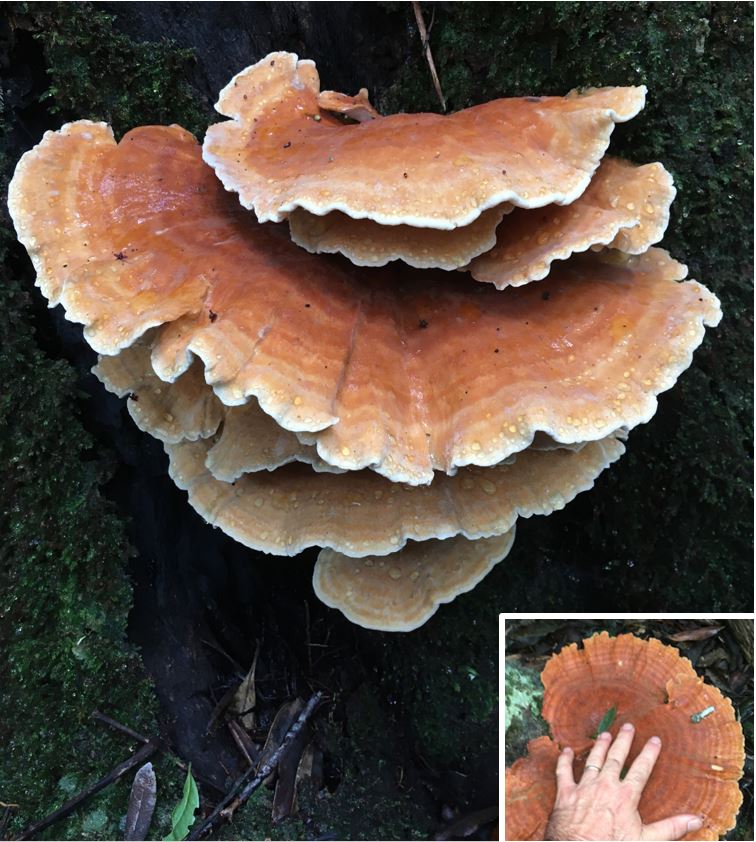
Another smaller species of Laetiporus (L. sulphureus) is yellow to brilliant orange and is likely to be seen around the tracks as the wet season progresses (I have seen it once this year but did not photograph it). Despite its distinctive colour, which would provide good material for a common name, L. sulphureus is called Chicken of the Woods, apparently because, like many unfamiliar foods, it “tastes like chicken”. However there are reports that it can cause tummy ache, so I suggest you stick to real poultry unless you really know your mushrooms.
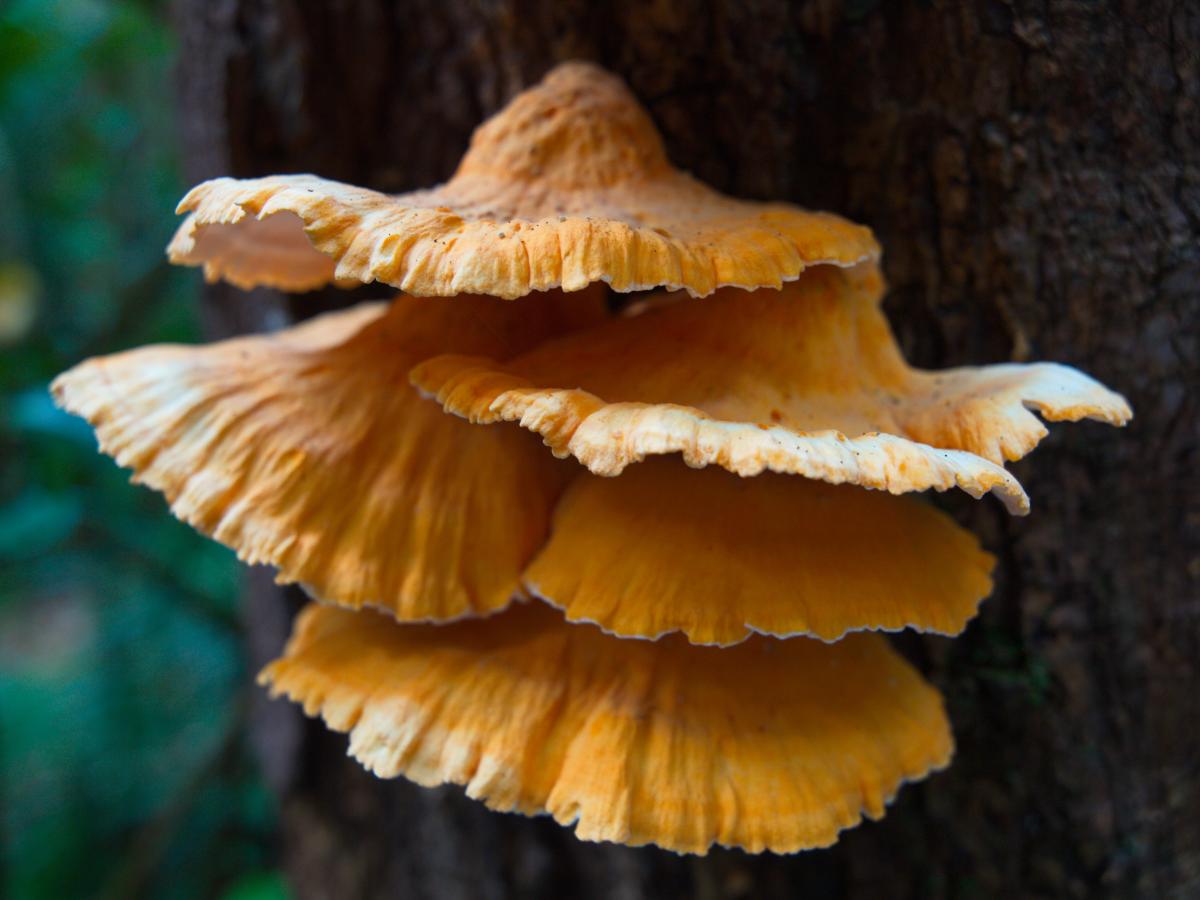
While we are showing photos of fungi that, while not seen by us this year, have been recorded in the past, this stunning Anemone stinkhorn (Aseroe rubra) was seen by Will and Andi in 2004 along the track to Witts Lookout.

Be on the lookout for these and other marvellous mushrooms as you stroll along our local tracks.
Text by Jamie Oliver and Andi Cairns; photos as per captions
Further Reading
Some references for those who would like to try their own identifications, or just learn more about Australian Mushrooms:
Facebook Mushroom Sites:
Australia & New Zealand Fungus Identification
Queensland Mycological Society
Fuhrer, B, (2004). A Field Guide to the Fungi of Australia. (now out of print, but might be in some libraries)
Young, T & Smith, K (2004). A Field Guide to the Fungi of Australia. UNSW Press
Facebook identification sites prefer a photo of the under-surface of the mushroom cap and (if possible) a spore print (this may be too much information!). It is also a good idea not to touch fungi with bare hands — it’s better to use a disposable glove or tissue to turn over a mushroom cap, and always wash hands after touching fungi.

A most informative posting and superb photos. Thank you for sharing Jamie & Andi. I look forward to some ‘fungi hunting’ this weekend.
I am just loving these articles and have particularly like these ones about the beautiful fungi to be found.
I also have a number of images from Paluma and surrounding areas on my fb page “Photography by Wade ”
Please feel free to have a look and comment if you desire.